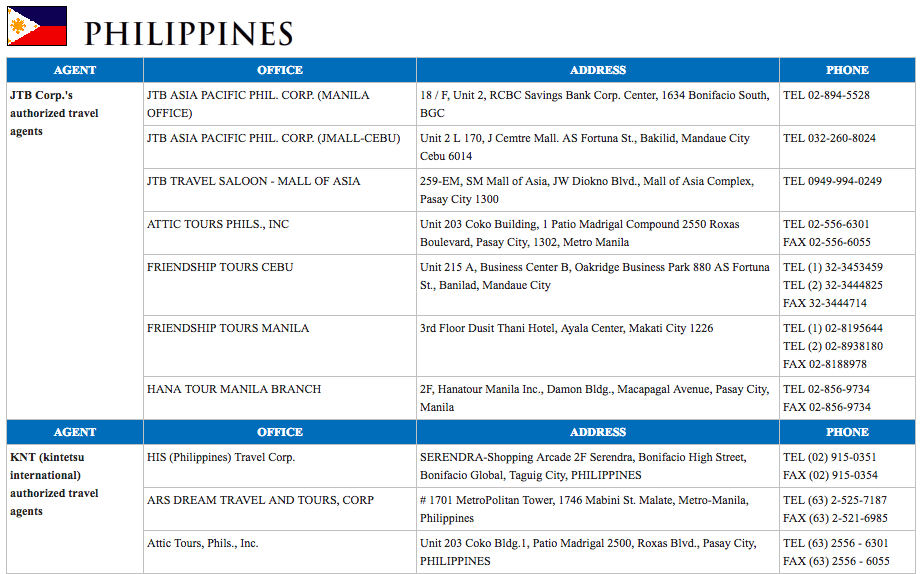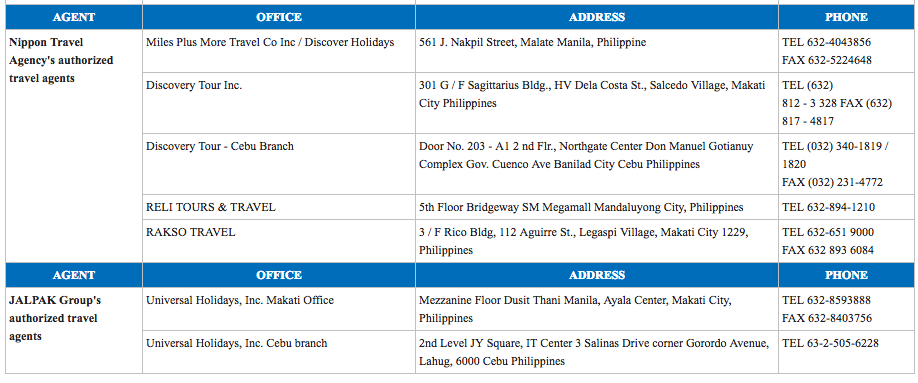Planning a trip to Japan can be daunting. One of the most difficult tasks presented to anyone planning a Japan trip is how to economically travel the country or even just specific cities.
Transportation in Japan is an exact science. Trains and buses leave on time whether it is packed with travelers or not. I experienced a time when a bus from Narita Airport going to Yokohama left even if there were just two of us onboard, and it had no stopovers, which meant there were really just two of us for the entire trip. This is why traveling around Japan is expensive. Also, traveling from one city to another city is costly because of quick travel time via bullet trains or shinkansen. You can even say that riding a shinkansen is a luxury.
For instance, a one-way trip from Tokyo to Osaka via shinkansen, which will take a little over 1.5 hours that covers about 550 km, can cost around 15,000 yen (approx. P7,000). That cost can already be spent for airfare somewhere.
Anyway, there is a way to cut down on travel expenses via the Japan Rail Pass or JR Pass.
What is the JR Pass?
The JR Pass is a discounted travel pass on Japan Railways lines. When traveling around Japan, it is one of the best value deals you can get. To cut down on transportation expenses, the JR Pass is a must-have if you’re traveling to multiple prefectures in Japan. In a way, if you’ll be traveling a lot around Japan, riding trains (including shinkansen except Nozomi and Mizuho services) and buses, and even ferries on JR lines, the JR pass basically pays for itself.
How to get a JR Pass?
To get a JR Pass, you need to buy what they call an Exchange Order from a designated travel company in the Philippines. Take note, you should buy your Exchange Order before coming to Japan. You can still buy in Japan but it will be more expensive. The JR Pass is sold at certain sales offices in Japan from March 8, 2017 to March 31, 2018.
Before coming to Japan, I bought my Exchange Order from Reli Travels and Tours in SM Megamall.
In the Philippines, here are the designated travel agencies and companies where you can buy an Exchange Order.
Source: japanrailpass.net
When you arrive in Japan, go to a designated JR hub in the airport or train station and exchange your Exchange Order into the JR Pass. You’ll have to present your passport too.
There is a JR Pass that covers the entire country and there are also those for certain regions only. You can get the JR Pass that covers the entirety of Japan if you’re traveling the whole country. I got this type of JR Pass because my itinerary was Fukuoka-Nagasaki-Hiroshima-Kansai Region-Nagoya-Tokyo back then.
Otherwise, you can go for regional JR Passes, which are cheaper. For instance, if you’ll only be traveling around Kansai Region (including Osaka, Kyoto, and Nara), a JR West Pass might already be enough. You can also choose how many days. The JR Pass for whole Japan has a validity of 7 days, 14 days, or 21 days. Regional passes may have shorter validity days.
Is the JR Pass worth it for your trip?
The JR Pass presents a discounted way to travel Japan but it is not entirely cheap. For instance, a JR Pass for entire Japan (for 7 days validity) costs 29,110 yen (approx. P14,148).
So, if you want to compute whether getting a JR Pass is worth for your trip, you can use this Japan Rail Pass Calculator.
The JR Pass in Tokyo
One of the common destinations in Japan is the bustling city of Tokyo. The JR Pass is accepted here including the Yamanote Line (which circles the city district), Narita Express (N’EX), and Tokyo Monarail to Haneda Airport. Just present the JR pass to the staff at ticket gates. Do not go through an automatic gate. I was able to do one day in Tokyo via the JR Pass. I don’t recommend it though because it can be very tiring.
Tips for using the JR Pass
- As you can see, the JR Pass is not like an IC card that you can tap on machines in train stations. It is a booklet with reminders and details about you including the validity date of the pass. To use it, you simply present it to the guard on the manned entry point in the train station. They will usually check the validity date on the JR Pass. Sometimes, they may ask for your passport too. In some instances when there are no guards at the entry point, a conductor may check the JR Pass onboard the train.
- The JR Pass can be used on the shinkansen but not on Nozomi and Mizuho services. Don’t make a mistake of boarding these trains because you will be required to pay the full fare for the trip if you do.
- The JR Pass can be used to reserve seats on the shinkansen. Simply go to a JR hub in the train station, choose your trip, and reserve it. It is recommended to reserve seats in advance because they may run out especially during weekends and holidays.
- There are instances when a JR train moves from a JR line to another railway. If that happens, take for instance the train travel from Shinjuku to Odaiba, you just need to pay for the excess at the ticket booth.
So, that’s it! Have fun traveling in Japan! 🙂
Any other practical Japan travel tips that you want to share? Comment them! 🙂






